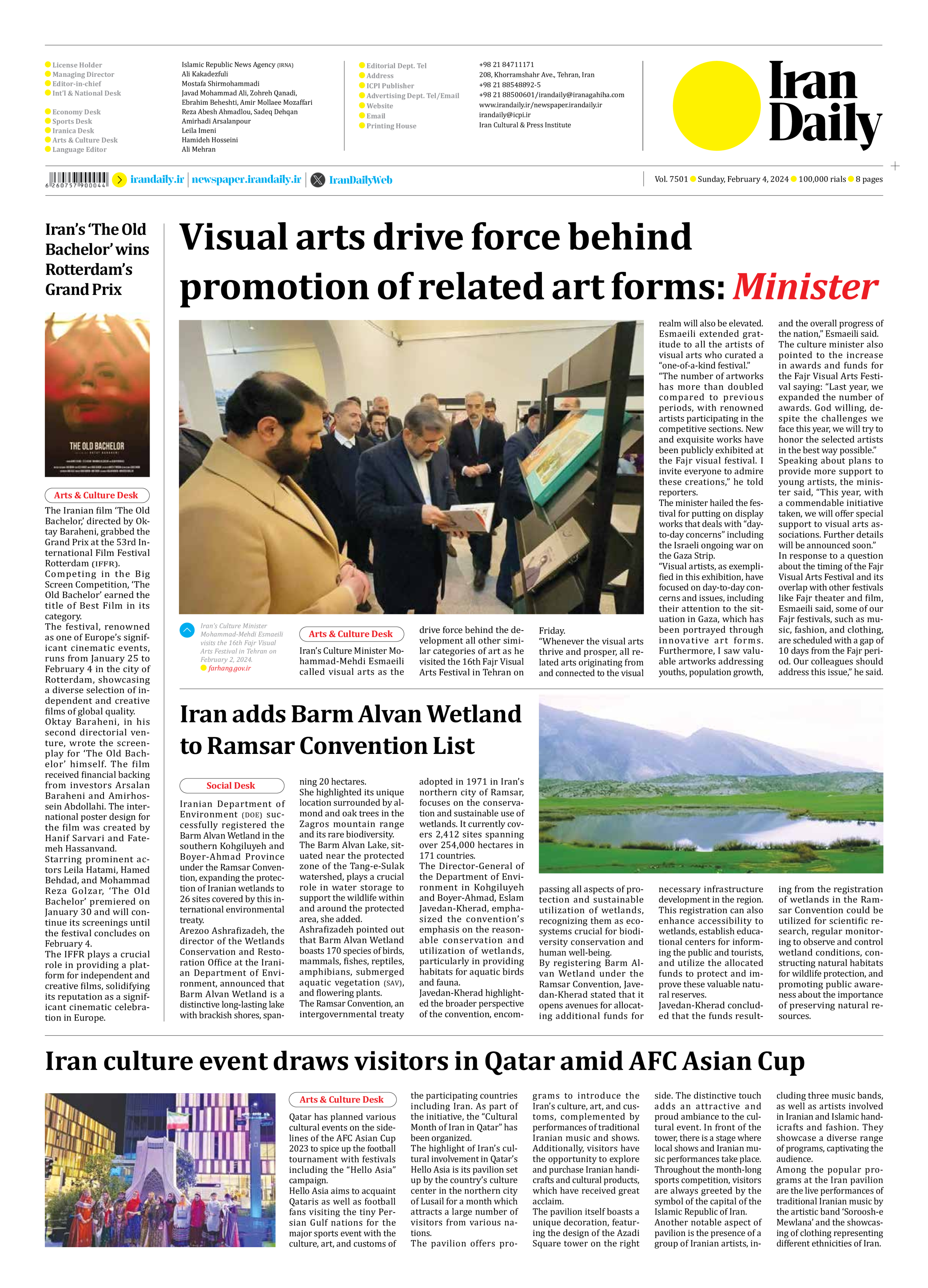
Iran adds Barm Alvan Wetland to Ramsar Convention List
Iranian Department of Environment (DOE) successfully registered the Barm Alvan Wetland in the southern Kohgiluyeh and Boyer-Ahmad Province under the Ramsar Convention, expanding the protection of Iranian wetlands to 26 sites covered by this international environmental treaty.
Arezoo Ashrafizadeh, the director of the Wetlands Conservation and Restoration Office at the Iranian Department of Environment, announced that Barm Alvan Wetland is a distinctive long-lasting lake with brackish shores, spanning 20 hectares.
She highlighted its unique location surrounded by almond and oak trees in the Zagros mountain range and its rare biodiversity.
The Barm Alvan Lake, situated near the protected zone of the Tang-e-Sulak watershed, plays a crucial role in water storage to support the wildlife within and around the protected area, she added.
Ashrafizadeh pointed out that Barm Alvan Wetland boasts 170 species of birds, mammals, fishes, reptiles, amphibians, submerged aquatic vegetation (SAV), and flowering plants.
The Ramsar Convention, an intergovernmental treaty adopted in 1971 in Iran’s northern city of Ramsar, focuses on the conservation and sustainable use of wetlands. It currently covers 2,412 sites spanning over 254,000 hectares in 171 countries.
The Director-General of the Department of Environment in Kohgiluyeh and Boyer-Ahmad, Eslam Javedan-Kherad, emphasized the convention’s emphasis on the reasonable conservation and utilization of wetlands, particularly in providing habitats for aquatic birds and fauna.
Javedan-Kherad highlighted the broader perspective of the convention, encompassing all aspects of protection and sustainable utilization of wetlands, recognizing them as ecosystems crucial for biodiversity conservation and human well-being.
By registering Barm Alvan Wetland under the Ramsar Convention, Javedan-Kherad stated that it opens avenues for allocating additional funds for necessary infrastructure development in the region. This registration can also enhance accessibility to wetlands, establish educational centers for informing the public and tourists, and utilize the allocated funds to protect and improve these valuable natural reserves.
Javedan-Kherad concluded that the funds resulting from the registration of wetlands in the Ramsar Convention could be utilized for scientific research, regular monitoring to observe and control wetland conditions, constructing natural habitats for wildlife protection, and promoting public awareness about the importance of preserving natural resources.







